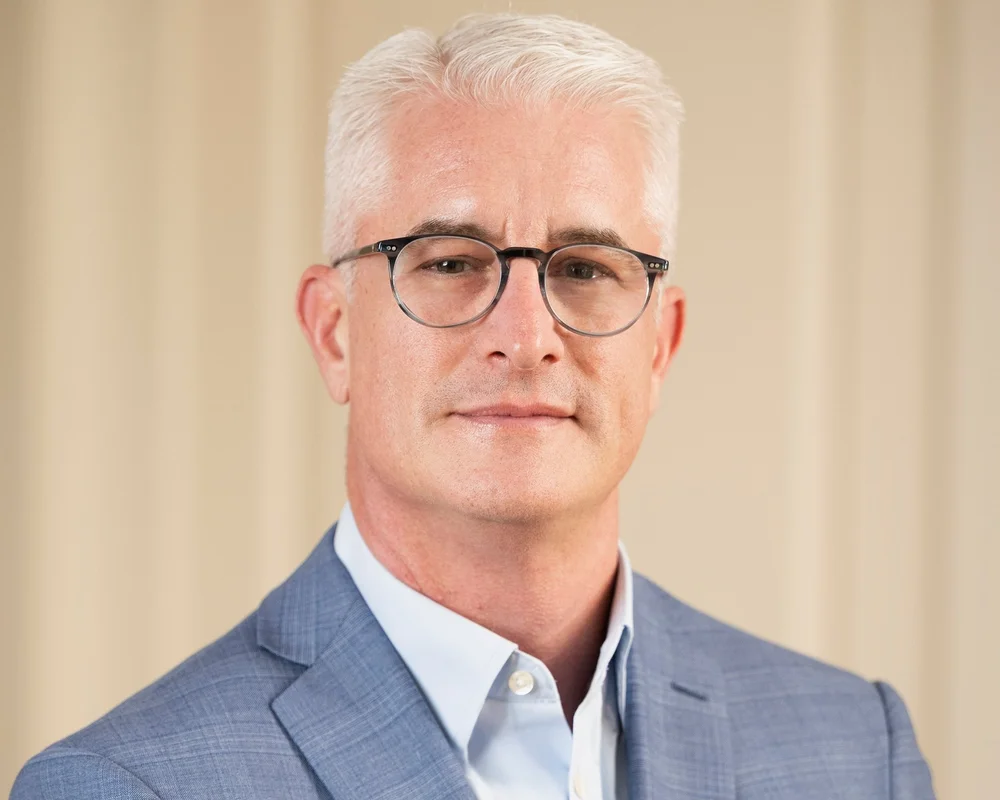 We live in a time where everything seems to be simultaneously centralized and yet distributed, and nothing does that more than cloud infrastructure. But it’s far easier to scale the core than it is the edge, because in the end the edge is everywhere on the planet. Therefore, a growing segment of the infrastructure world has begun to specialize in building out that global edge to support those that need to reach it, and one of the leaders of that buildout is Zenlayer. With us today to talk about Zenlayer’s approach to the cloud edge are Lawrence Lee, VP of Partnerships and Alliances, and Sisi Wang, Head of Marketing.
We live in a time where everything seems to be simultaneously centralized and yet distributed, and nothing does that more than cloud infrastructure. But it’s far easier to scale the core than it is the edge, because in the end the edge is everywhere on the planet. Therefore, a growing segment of the infrastructure world has begun to specialize in building out that global edge to support those that need to reach it, and one of the leaders of that buildout is Zenlayer. With us today to talk about Zenlayer’s approach to the cloud edge are Lawrence Lee, VP of Partnerships and Alliances, and Sisi Wang, Head of Marketing.
TR: What are the origins of Zenlayer and what does the company look like today?
LL: Zenlayer has been around for a little over eight years and we have more than 500 employees. We are headquartered in Los Angeles, with other global headquarters in Shanghai, Singapore, and India. We serve a lot of multinationals from emerging markets. The company has grown to more than 220 data centers from which we provide edge cloud services. Much of the accelerated growth of our business has come in the early stage, with a lot of APAC multinationals. Since I came on board about two years ago, we’ve enacted many partnerships and alliances, working together with them to sell with and through Zenlayer in the markets.
TR: Where in the edge cloud ecosystem does Zenlayer see opportunity ahead, and how are you looking to take advantage of it?
LL: We see growth opportunities in the emerging countries. When you look at the big hyperscale companies, many of them are focused in the major tier-1 countries, and on markets like Amsterdam, Frankfurt, London, Hong Kong, Ashburn, and Silicon Valley. Zenlayer is deployed in and serves many customers in those markets as well, but we see the growth engine as being in the hard-to-reach emerging countries: APAC markets like China, India, Indonesia, Vietnam, Malaysia, and LATAM markets like Brazil and Mexico, for example. A majority of the world lives in those countries, but they are underserved. Yet the mobile broadband userbases are growing at an unbelievable rate. India is the second largest country in the world; their internet userbase is twice the size of the population of the US, and English is a national language. That kind of growth opportunity is where we feel we can be one of the leading edge cloud service providers.
A lot of social media, live video streaming, IoT, and gaming data is being created and consumed at these edge markets, but much of the cloud computing environments are centralized. A shift to the edge market is inevitable because the storing and processing of that data needs to be close to the source to enhance user experience. Our goal as a company is to cover the entire internet user base and deliver applications in 10 milliseconds or less.
TR: What types of infrastructure do you provide your customers in those edge cloud markets?
LL: Our core services that we take to market are our bare metal cloud. We have 58 major nodes throughout these emerging countries where we have set up hundreds of racks of dedicated servers. A customer can just go into our console and provision dedicated servers for a gaming application across APAC, LATAM, US, or Europe in a matter of minutes. They can designate the device configuration, the number of cores in the operating system, and the type of storage. Those servers are then dedicated to the customer on a month-to-month basis. The other part is the more than 220 data centers that we PoP into and which are connected to our private backbone. If you want to interconnect L.A. into Shanghai, or Brazil into Europe, you can use Zenlayer’s cloud networking for on-demand interconnection and point-and-click seamless integration across any of our data centers.
TR: Which verticals are you finding the most success with so far in this edge cloud strategy?
LL: I’d say CDNs, e-commerce companies, media/entertainment, gaming, and video streaming customers. We focus on any type of company that has an online presence with intensive bandwidth needs and serves consumers all around the market. We also support big cloud service providers in some of these hard-to-reach markets. Zenlayer has the presence in these edge markets to provide quick on-demand infrastructure and point-and-click interconnection.
TR: How do you select new markets to expand your infrastructure into?
LL: Five years ago, we were in approximately 10 data centers because our customers had started off going into the major tier one markets. But as they grew bigger were setting up data center infrastructure or offices in other major cities, they’ve pushed us to these edge markets. They want to serve their partners, customers, and ultimately their end user consumers in these edge markets. So, in places such as LA, London, or Singapore we have anywhere from 3 to 10 data center deployments throughout the city to serve the demand in those markets. But now our customers want to go into other markets, like Portland, Fujairah, Qatar, Istanbul, or Bogota. We just did a big project for a live video chat company to go into Mexico City. Our customers are pushing us to these edge markets, and they have the business needs to serve their customers in these markets.
TR: How rapidly are you adding to that footprint and what geographies are attractive?
LL: When the pandemic started about two years ago, we had approximately 140-150 data centers. Now, we have expanded to more than 220 data centers. Our leadership team feels that in a couple of years we will probably be likely have 300 to 400 data center deployments as well as more capacity into the existing cities and countries that we’re already in. We are looking to move into new markets like Canada, and some other South American countries, and expand into Africa. Africa is another great growth opportunity, and so is the Middle East. But basically, when customers ask us to go into a country, that’s where Zenlayer is going to expand. As our customers expand into these new markets, it’s difficult for them to procure data center and hardware and to deal with staff augmentation into these markets, especially during this pandemic. Instead, they can leverage companies like us to test out a market on a month-to-month basis to see if it’s successful or not.
TR: Other than that geographical expansion, where else are you putting your resources today?
SW: We have been working a lot with enterprises in the past several years on our IaaS product portfolio, which includes bare-metal cloud and cloud networking. Now we are actually going up-stack to the PaaS level, or Platform-as-a-Service. We launched our new Zenlayer Global Accelerator in July, which was significant for us. Zenlayer Global Accelerator can accelerate any sort of application that supports protocols from layer four to layer seven: gaming platforms, CRM software, SaaS platforms, e-commerce, and many other types of things. With ZGA you don’t have to worry about the underlying infrastructure at all, and it’s operated in a way that is very cloud. You just get into the self-serve console, configure your own thing, and spin up the service in five minutes. We’re trying to give the power back to the developers, so we also make this API-driven. I think the vision is really to empower not only every organization but every individual for a better digital experience.
TR: Are you selling directly to your customers, or leveraging partners and the channel?
LL: The initial growth of Zenlayer came primarily through direct source. Many of those customers are from APAC where we are supporting a number of large, multinational companies as they scale their business throughout APAC, the US and Europe. More recently, my team, along with great support from the marketing team, has developed a channel that is partner-enabled. We have partnered with a lot of our existing vendors and suppliers where we have structured bilateral referral agreements, so they can resell or white-label. We’re automating and integrating our core services. We’ve also structured a very high commission rate for a lot of our partners. They are referring business to us, and we’ve had great success with customers of theirs that are looking to deploy into China, India, and other hard-to-reach countries. So, our direct sales team is now fully integrated, and we are channel friendly. We are seeing 50 percent of our leads coming from our partners.
TR: What kinds of partners do you work with for those channel opportunities?
SW: There are several categories of partners that we are working with, from both the marketing perspective and from the channel. First is the hyperscalers, which include the big names we all know. We help them extend into those hard-to-reach markets, such as application acceleration for example. And by working with hyperscalers we also connect our global network backbone to all those different public clouds. Second are the data center companies, with whom we can do bare metal cloud connectivity. Third, we work with powerful IT platform partners, such as Intel and Dell. With our partners, we do a number of activities with them to enable customers of primarily two scenarios: any company that cares about globally distributed end-user experiences, and bigger enterprises with global offices and internal systems like CRM, ERP, conferencing, or whatever SaaS they have to support the company IT.
TR: What new areas of technology do you see driving demand for Zenlayer going forward?
LL: Another great industry that we’ve seen a tremendous uptake in is the blockchain community. For many blockchain crypto companies, their entire infrastructure is a decentralized, distributed environment. These blocks, or digital records, need to sit in some type of infrastructure and network, and they really rely on bare metal cloud partners to help set up their peer-to-peer network over the public internet. So, this past year many of these companies have leveraged Zenlayer to set up what they call Web 3.0 infrastructure.
TR: What the biggest challenge ahead in scaling Zenlayer’s business model?
LL: Like many companies right now, I’d say one of the biggest challenges is hiring talented people. We have employees based in India, Singapore, Shanghai, Beijing, and other key major markets. We also have remote employees. Setting up an operation that really supports this kind of remote work environment so that we can all work together and collaborate is the new paradigm. In addition to that, we must keep ahead with market intelligence about what’s coming down the road. We don’t want to skate where the puck is, we want to venture to where it’s going to be. Finally, understanding customers’ needs. Not all IT infrastructure is going to sit in one environment; one size does not fit all.
SW: Overall, I think we want to make things easy for people. Our console is a big leap in this area, but we will definitely challenge ourselves to take it to the next level. Also, we’re known as a ‘one-stop shop’ that every industry can use, but we want to become better focused. It’s good to be used by any type of industry, but at the same time, we need to concentrate our resources in the areas where we can make the biggest impact in areas aligned with our vision.
TR: Thank you for talking with Telecom Ramblings!
If you haven't already, please take our Reader Survey! Just 3 questions to help us better understand who is reading Telecom Ramblings so we can serve you better!
Categories: Cloud Computing · Datacenter · Industry Spotlight






Discuss this Post